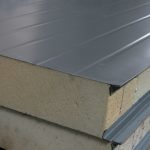Content
- 1 The location of the dew point in a non-insulated wall
- 2 Where is the dew point in the insulated wall (outside)?
- 3 How to choose a method of wall insulation in the house?
Without possession of certain knowledge it is impossible to build a high-quality, durable and safe home. Many novice builders do not know what the dew point in the wall is, and therefore make common mistakes in the work process.
This concept means a temperature indicator at which moisture in the wall turns into condensate. The point can be located anywhere on the wall - outside, inside or in the insulation. Most often it depends on the temperature of the air in the room and its humidity level.

You can avoid getting to the dew point by knowing its location. It depends on whether the wall is insulated or not, as well as what materials it is made of.
The location of the dew point in a non-insulated wall
In this case, the point can be located in one of two places on the wall:
- Between its middle and the outer part;
- Between the core and the inner surface;
- On the inner surface.
Determining the exact location is easy enough. To do this, you need to carefully examine the surface of the wall in the apartment. In the first case, it will remain dry, regardless of weather factors and indoor temperature.
In the second, its surface may become wet in the event of a sharp decrease in ambient temperature. In the third - the surface of the wall will remain wet throughout the heating season.

Where is the dew point in the insulated wall (outside)?
If the wall surface is insulated from the street using the correct method and the proper choice of insulation thickness, the dew point should be located in the middle of the insulation material. In this case, the wall will remain dry at any time of the year.

If during the work the money was saved and the insulation of the wrong thickness was installed, the dew point will be located not only inside the material, but also in the concrete wall. In this case, not only the surface of the wall, but also the insulating material can get wet. This can cause it to peel off, cause fungus or mold.
How to choose a method of wall insulation in the house?
It is important to remember that the choice of insulation method directly depends on the location of the dew point in the wall. Therefore, a decision on the possibility of internal insulation can be made only after determining its location. It is strictly forbidden to insulate it from the inside if the wall gets wet throughout the winter period.
-
 What you need to know when designing a half-timbered house
What you need to know when designing a half-timbered house
-
 The better to close the gaps between the walls and the ceiling in a wooden house
The better to close the gaps between the walls and the ceiling in a wooden house
-
 Attic floor insulation
Attic floor insulation
-
 The consequences of errors when knitting reinforcing bars
The consequences of errors when knitting reinforcing bars
-
 Why it is impossible to mount tongue-and-groove plates without elastic laying
Why it is impossible to mount tongue-and-groove plates without elastic laying
-
 Why you can not immediately walk on the laminate after laying
Why you can not immediately walk on the laminate after laying
-
 What is the difficulty of installing roof sandwich panels
What is the difficulty of installing roof sandwich panels
-
 Condensation on the sandwich panels due to installation errors
Condensation on the sandwich panels due to installation errors
-
 Is it possible to build a house alone
Is it possible to build a house alone
-
 Typical errors when installing wall panels
Typical errors when installing wall panels
-
 Wooden carport: pros and cons
Wooden carport: pros and cons
-
 What causes a violation of the temperature regime when laying brick
What causes a violation of the temperature regime when laying brick
New publications are published daily on our channel in Yandex. Zen
Go to Yandex. Zen


